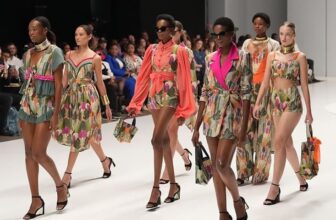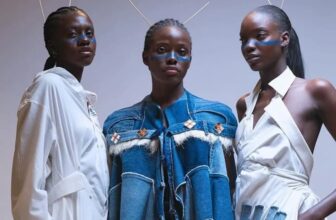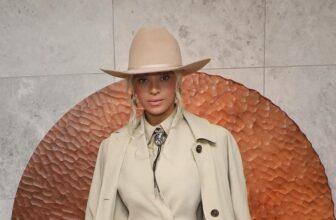Inclusivity within the fashion industry transcends mere aesthetics or fleeting trends aimed at riding the wave of global engagement with overarching goals. It signifies a deep-seated commitment to a culture that prioritizes individuality over conformity and reduces the propagation of harmful beauty standards.
Fortunately, recent years have witnessed a discernible transformation in the fashion industry, marked by a greater emphasis on inclusivity and diversity. Brands are now embracing models from various ethnic backgrounds, genders, and body types. While this marks a positive step forward, it is crucial to acknowledge that the fashion world still has significant progress to make, particularly in the area of plus-size representation.
To duly acknowledge the fashion industry’s progress, it’s important to know that plus-size models, who were once on the sidelines, are now taking center stage in high-profile campaigns and runway shows.
One of the significant advantages of the expanding plus-size fashion market is its increased accessibility. Designers, mass retailers, and specialized shops are all recognizing the importance of inclusivity by expanding their size ranges to serve a more diverse customer base. This development not only means that more women have access to fashionable clothing, but it also ensures that plus-size individuals no longer have to sacrifice their personal style to find well-fitting garments.
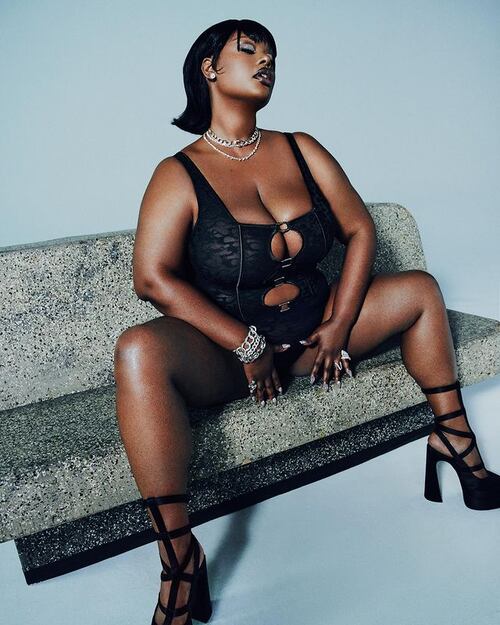 instagram.com/@savagexfenty
instagram.com/@savagexfenty The body positivity movement, propelled by the influence of social media and prominent figures, has compelled the fashion industry to confront its historical tendencies of exclusion. As a result, numerous consumers are now advocating for greater diversity and inclusivity in fashion brands, and some companies are taking proactive steps to meet these demands.
In 2016, a watershed moment occurred within this revolution as Ashley Graham proudly adorned the cover of Sports Illustrated’s Swimsuit Issue. This marked a historic milestone in plus-size representation. Following in her footsteps, remarkable figures such as Paloma Elsesser, Precious Lee, and Tess Holliday have since emerged in the fashion industry, actively reshaping conventional beauty ideals and revolutionizing the benchmarks of high fashion.
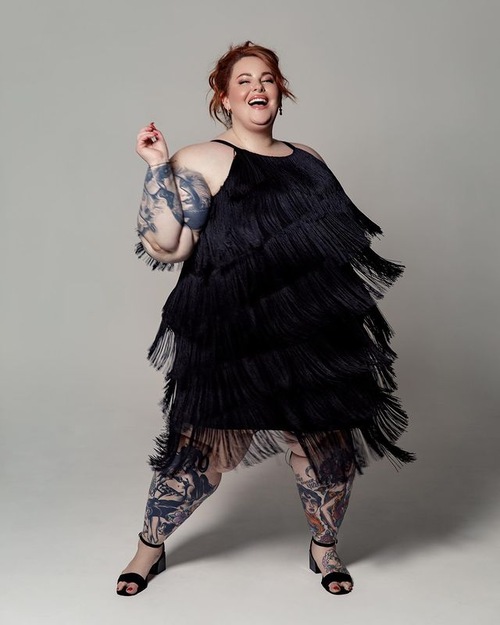 instagram.com/@tessholliday
instagram.com/@tessholliday The Persistent Problem with Plus-Size Representation in the Fashion Industry
The progress achieved thus far should not divert attention from the enduring issue of inadequate plus-size representation within the fashion industry. Despite some positive changes, these improvements often appear insignificant when contrasted with the broader scope of fashion advertising and runway presentations. On major fashion runways during prominent fashion weeks, the presence of plus-size models remains disproportionately low, and numerous mainstream brands persist in providing limited options for plus-size consumers.
This absence of inclusivity not only restricts the choices available to individuals with plus-size bodies but also conveys a detrimental message, implying that their bodies are less deserving of celebration than those of their slimmer counterparts.
Another glaring problem that persists is the ongoing underrepresentation of plus-size models in mainstream fashion. Despite constituting a substantial portion of the consumer base, plus-size individuals are frequently sidelined in the industry’s narrative. This exclusion perpetuates harmful beauty standards and adversely affects the self-esteem of many.
Also, it is disheartening to witness the fashion industry perpetuate detrimental stereotypes. Plus-size individuals are frequently depicted as lazy/indolent, unhealthy, or lacking in self-discipline. These stereotypes not only bolster discrimination but also present obstacles for plus-size models trying to establish themselves in the industry. Designers and brands often use these stereotypes as justifications for not including larger models, asserting their reluctance to endorse an unhealthy way of life. This prejudice disregards the reality that one’s health cannot be solely gauged by their size and that individuals of all body sizes can exhibit both good and poor health.
Plus-size individuals encounter another obstacle: the scarcity of fashionable and chic attire designed for larger sizes. Numerous fashion brands still overlook including plus-size selections in their collections despite the positive changes seen so far.
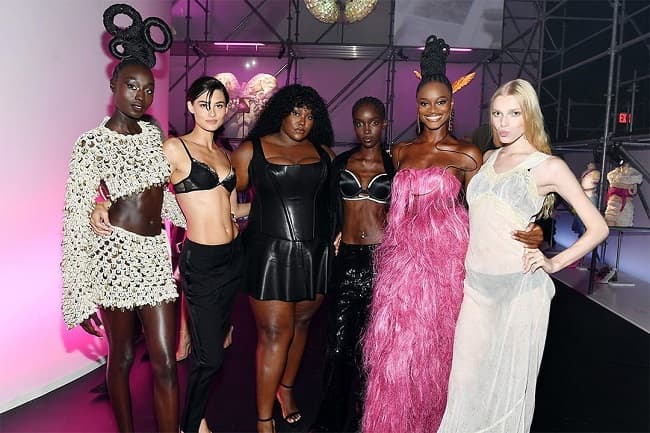 Photo courtesy: Victoria's Secret
Photo courtesy: Victoria's Secret Nyagua Ruea, Grace Elizabeth, Yseult Onguenet, Maty Fall Diba, Mayowa Nicholas, and Colin Jones at #TheTour23 launch event
This superficial approach to diversity can be damaging, as it fails to address the underlying issues of discrimination and bias in the industry. Achieving true representation necessitates a wholehearted commitment to change, encompassing both the selection of models and the range of sizes offered by fashion brands.
Furthermore, the fashion industry frequently confines plus-size models to designated categories such as “plus-size fashion.” This division perpetuates the notion that plus-size individuals should exclusively seek fashion within this specialized niche. In reality, individuals of all body sizes desire to don chic and inclusive attire and deserve visibility across all facets of the fashion industry.
The Real-Time Impact of Plus-Size Underrepresentation and Why the Fashion Industry Should Do Better
The enduring absence of plus-size representation within the fashion industry carries tangible consequences, particularly impacting individuals’ perceptions of their bodies and their self-esteem. Young people, in particular, are highly susceptible to the detrimental messages propagated by the industry’s limited portrayal of beauty. The incessant bombardment of unattainable body ideals can result in dissatisfaction with one’s own body, diminished self-worth, and even the development of eating disorders.
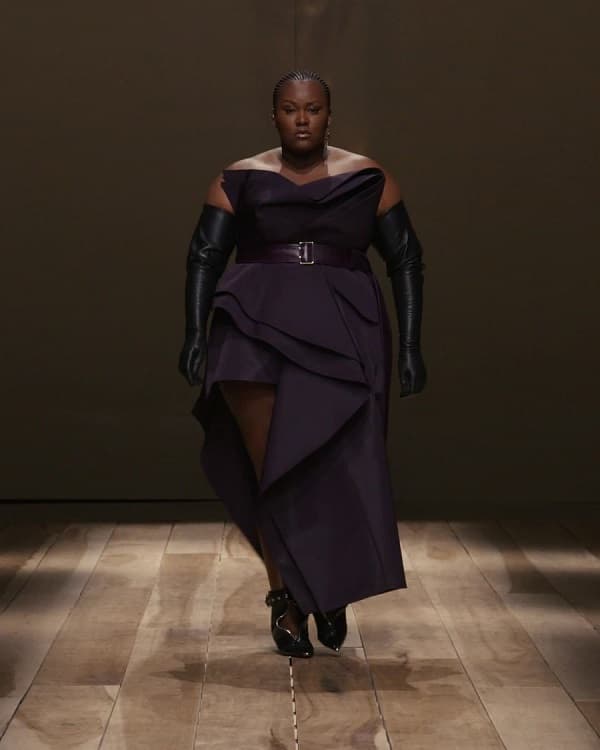 Photo: @ChloeLeDrezen
Photo: @ChloeLeDrezen Although there has been progress within the fashion industry regarding the acknowledgment of diversity and inclusivity, there remains a substantial amount of work ahead. To genuinely embrace plus-size representation, brands must transcend superficial gestures and fully incorporate a range of diverse body types into their marketing campaigns and fashion presentations.
Moreover, the fashion industry must take into account its influence on society’s perception of beauty. Embracing a wide spectrum of body sizes and shapes can play a role in reshaping societal beauty norms and fostering healthier perspectives on body image.
Brands should demonstrate a sincere commitment to promoting inclusivity rather than resorting to tokenism as a marketing tactic. Authentic representation necessitates a genuine commitment to transformation both in front of and behind the camera. In conclusion, while the fashion industry has made some progress in recent years toward inclusivity, the issue of representing plus-size individuals remains urgent.
Recognizing that beauty transcends size and shape is a savvy business decision. It’s high time the fashion industry put its words into action and implement real, enduring changes that mirror the diversity of its customer base. Until then, the battle for genuine and equitable plus-size representation in the fashion industry continues.



